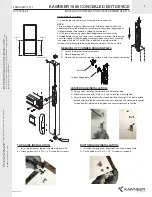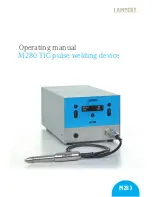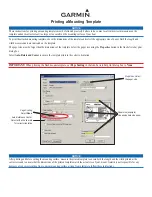
VBW Out A:
Output for the Low Pass Filter, which is filtering the output of the other filter section’s High
Pass Filter to form a filter topology with Variable Bandwidth. Use this output for “clean” processing of the
input signal.
VBW Out B:
Second Variable Bandwidth output, created by routing Variable Bandwidth Out A through a
single-transistor clipping stage with AC Coupled output. The base of the transistor needs approximately
0.7V input to activate, so lower Bandwidth or Cutoff frequency settings which produce a quiet output may
cause this output to “mute” until the voltage threshold is reached.
4. Calibration
Calibration of the Macropod is simple and should be done by ear. Patch a triangle-wave VCO within the
audible frequency range (probably 1kHz or so is best) into “Audio In B” and turn the Resonance control
fully CW. Monitor VBW Out A and adjust the rear trimpot until maximum Resonance doesn’t cause
self-oscillation (added frequencies besides the input). However, if you like the way the self-oscillation
sounds, turn up the trimmer and go with it–it will not damage the circuit at any setting.
5. Patch Ideas
"Extra-Grit Variable Bandwidth"
Patch Input Audio to “Audio In A” and patch VBW Out B to “Audio In B”, then use VBW Out A as your
main output for interesting added harmonics at the input.
“Extra Resonance”
Patch BP A or BP B output into an attenuator, then into “Audio In A” and input signal to “Audio In B”, or
vice versa. Use the attenuator to control the amount of extra resonance added by the BP output.
“Heavy Metal Guitar”
Turn the Bandwidth control fully CCW and send any waveform to any audio input. Send an envelope or
gate pulse to BW CV and Attenuate to taste. Monitor VBW Out B to create a chunky, palm-muted like
sound.
These are but three patch ideas, and a thorough exploration of the Macropod can surely yield many more.






















